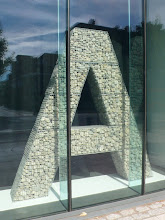Probe returns encourage the construction of narratives about the participants, they make the familiar strange and the strange familiar, but they don’t dictate what should then be made through the design process (Gaver et al 2004). With their philosophical approach rooted in the disciplines of art and design, and their ability to provide ‘fragmented illustrations and narratives’ (Jääsko & Mattelmäki 2003:4-5) the probes are an appropriate method for this research. The fragmented nature of the narrative, perhaps has parallels with Massey’s spontaneous and disconnected sense of place, but also offers the designer an opportunity to develop a fuller narrative from the responses. As Gaver et al (2004) state
Rather than producing lists of facts about our volunteers, the probes encourage us to tell stories about them, much as we tell stories about the people we know in daily life.
(Gaver et al 2004:55)
The cultural probes in this instance consist of a series of postcards, a 12 shot disposable camera, a memory/story sheet, a recipe sheet and a journey log.

All materials are designed in such a way as to both remove associations with traditional ‘scientific’ types of questionnaire-based research and to reduce the ‘distance’ between researcher and participant. To this end the language used is open and informal and the majority of images used are bold and colourful photographs, and are predominantly everyday types of objects or scenes, for example, a doormat, road markings and a view of blue sky and clouds. For the postcards in particular the chosen images attempt not to ‘lead’ or prejudice the participants in any way regarding what the question might be trying to elicit in terms of their response. Through the information sheets, participants are also reassured that it is their opinions that count, that there is no such thing as a ‘wrong answer’ and that their answers may be as simple or as detailed as they wish.
Initial responses to the packs have been very good. Participants have been engaged by both the design and the content, and have been positive about both the research project and their contribution via the cultural probes. Many participants have commented on how the pack will make them look afresh at familiar spaces and routes. For groups of older residents the recipe and memory sheets have prompted lively discussions about their past experiences within Hackney and how life has changed.


No comments:
Post a Comment